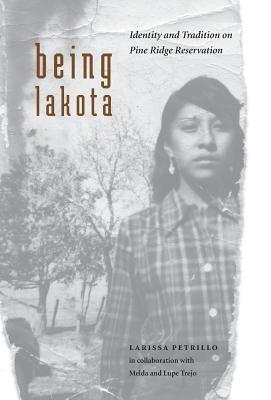University of Nebraska Press
Being Lakota: Identity and Tradition on Pine Ridge Reservation
Being Lakota: Identity and Tradition on Pine Ridge Reservation
Couldn't load pickup availability
Being Lakota explores contemporary Lakota identity and tradition through the life-story narratives of Melda and Lupe Trejo.
Melda Trejo, née Red Bear (1939-), is an Oglala Lakota from Pine Ridge Reservation, while Lupe Trejo (1938-99) is Mexican and a long-time resident at Pine Ridge. In their forty years together, the Trejos raised eleven children, supported themselves as migrant workers, and celebrated their lives and cultural heritage.
Conversations between this Lakota/Mexican couple and scholar Larissa Petrillo convey key aspects of the couple's everyday life: what it means to be an Indian and Lakota; how they negotiate their different ethnic identities; their feelings about recent concerns with appropriating Lakota religious practices and beliefs; and the tenets of Lakota spirituality that shape their perceptions and actions.
These issues are highlighted as they talk about their experiences setting up a Sundance ceremony. In the late 1980s, they began holding a Sundance on the Red Bear family's land near Allen, South Dakota, and the ceremony was dedicated to Lupe after his death. Being Lakota deepens our understanding of modern Lakota life and affords a memorable glimpse of the choices and paths taken by individuals in a Native community.
It also serves to explore new approaches to collaborative ethnography, with reflections on learning to work well in a Native community. Larissa Petrillo is an instructor of interdisciplinary studies at the University of British Columbia. Her articles have appeared in contributed volumes and in American Indian Quarterly.
Author: Larissa Petrillo
Publisher: University of Nebraska Press
Published: 03/01/2007
Pages: 176
Binding Type: Hardcover
Weight: 0.83lbs
Size: 8.67h x 5.77w x 0.77d
ISBN: 9780803237506
About the Author
Larissa Petrillo is an instructor of interdisciplinary studies at the University of British Columbia. Her articles have appeared in contributed volumes and in American Indian Quarterly.
Share


